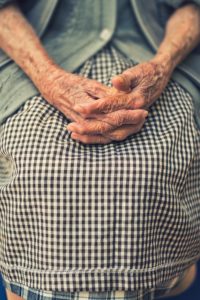
Elder abuse can come in many forms. The following are types of abuse that older and vulnerable adults may experience:
- Physical Abuse—inflicting physical pain or injury on a senior, e.g. slapping, bruising, or restraining by physical or chemical means.
- Sexual Abuse—non-consensual sexual contact of any kind.
- Neglect—the failure by those responsible to provide food, shelter, health care, or protection for a vulnerable elder.
- Exploitation—the illegal taking, misuse, or concealment of funds, property, or assets of a senior for someone else’s benefit.
- Emotional Abuse—inflicting mental pain, anguish, or distress on an elder person through verbal or nonverbal acts, e.g. humiliating, intimidating, or threatening.
- Abandonment—desertion of a vulnerable elder by anyone who has assumed the responsibility for care or custody of that person.
- Self-neglect—characterized as the failure of a person to perform essential, self-care tasks and that such failure threatens his/her own health or safety [1]
[1] “What is Elder Abuse?” Administration for community Living US Dept. of Health and Human Services. Accessed May 3, 2017. https://www.acl.gov/programs/elder-justice/what-elder-abuse
Local Resources:
Vermont Association of Area Agencies on Aging
Vermont Dept. of Disabilities, Aging and Independent living


Comments